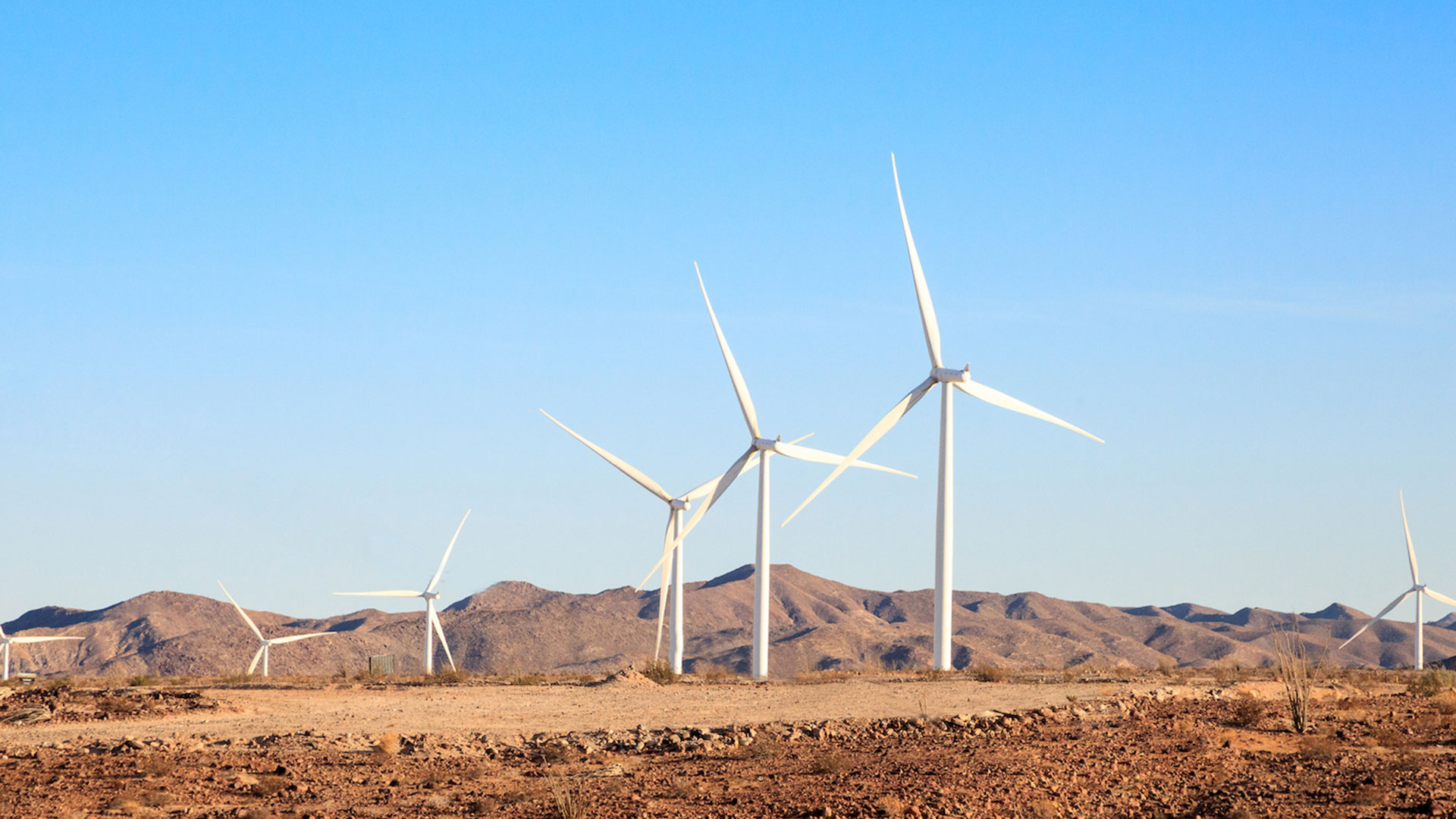
Publication
Global Asset Management Review: Issue 4
Welcome to the third issue of Global Asset Management Review.


Global | Publication | May 2020
Originally published by Petroleum Economist – Energy Transition Newsletter
Floating wind installations are gaining traction across the world, particularly in the UK, France, Japan and the US. The World Bank predicts that floating offshore wind could also play a leading role in the energy mix for countries such as Brazil, Vietnam and South Africa in the future, representing a potential for large-scale projects located close to areas of concentrated energy demand.
Oil and gas majors are uniquely positioned to capitalise on years of logistical and commercial experience in offshore developments by expanding their portfolios to include floating wind projects. We have already witnessed the first steps of this transition with Shell’s acquisition of EOLFI, and the creation of WindPlus, a collaboration between Repsol, Engie, EDP and Principle Power.
The International Renewable Energy Agency (Irena) predicts that floating offshore wind could cover up to 15pc of the global offshore wind installed capacity (almost 1TW) by 2050, with more than 350MW of floating demonstrators set to be deployed by 2022 and between 5GW and 30GW of installed capacity globally by 2030.
A move into floating wind would not be without its risks, but through a combination of solution-driven engineering teams and a desire to be part of the transition, no sector is better placed than the oil and gas industry to develop the technology and lead the floating wind market to commercialisation.
Floating wind farms are power production turbine installations mounted on structures or platforms that float on a body of water. In jurisdictions where permitted land use is an obstacle to authorising large onshore wind farms, or where water depths have constrained the construction of fixed-base turbines, floating installations avoid the issues of land use competition or challenging consenting processes.
In practice, floating wind installations tend to be found further offshore due to the scale of such projects and in order to address the challenges posed by waters too deep for fixed-base technology.
The oil and gas sector benefits from years of experience with offshore infrastructure that other developers have not necessarily enjoyed, such as working with moving cables and structures in deep waters, and there are similar opportunities for the oilfield support sector, e.g. providers of tugs, mooring systems, heavy lift vessels and cabling.
The sector has a wealth of experience in maintaining assets in unpredictable marine environments and there are obvious synergies in terms of defect detection, planned maintenance and asset repair.
Oil and gas majors are uniquely positioned to capitalise on years of logistical and commercial experience in offshore developments.
For floating technologies, the rights to use of the body of water will be one of the first things to be assessed as part of a due diligence exercise, including third-party rights such as fishing or shipping rights. Oil and gas companies are well versed in navigating these issues, and benefit from significant research and development capabilities, existing supply-chain relationships and an understanding of offshore project management and Health and Safety Executive rules.
Many companies, such as Shell, Total and Equinor have already made the foray into conventional offshore wind, but the early mover benefits of floating technologies are still to be realised. A good strategy might be for traditional oil and gas players to boost their capabilities by partnering with (or acquiring) wind specialists to help drive the development of a new market.
Floating offshore technology can benefit oil and gas companies beyond creating new income streams from delivering power to customers onshore. While companies are scaling up their operations, the electricity generated can be used to power oil and gas installations.
At present, approximately 5pc of all offshore wellhead production globally is used as fuel for platforms, reducing downstream sales and producing emissions of around 200mn t of CO2/yr.
There are some instances where upstream production and offshore wind may overlap; platforms can be retrofitted to re-use offshore oil and gas infrastructure in line with both the UK government’s maximising economic recovery (MER) of petroleum strategy and to help achieve any decommissioning obligations (with related cost savings1). An existing example is Equinor’s 88MW Hywind Tampen project, which will power two of its offshore drilling sites.
Electrification of platforms will reduce both costs and emissions, and extend field lives when compared to platform-based generation. Overall, the project is estimated to reduce CO2 emissions by more than 200,000 t/yr by reducing the use of gas turbines on Equinor’s fields.
Investment in new renewable technologies such as floating wind can help oil and gas players gain a stronger foothold in the energy transition.
Recent research carried out by Wood Mackenzie suggests that platform operators could reduce their electricity bills by up to 50pc by switching to an in-situ renewable source such as floating offshore wind, although any cost savings would need to be carefully considered in the context of the capex costs for installing the turbines and estimated life span.
Post-Macondo, oil and gas companies came under increased scrutiny, and this has only intensified since the Paris Agreement was signed and movements such as Extinction Rebellion have grown.
Investor activism is just one way in which oil and gas majors have come under pressure to reduce emissions and improve their environmental performance. By developing a serious presence in new technologies such as floating offshore wind and carbon capture and storage, oil and gas companies can reduce the carbon intensity of existing exploration and production activities, diversify their supply-side energy mix, reduce the overall carbon intensity of their output, with the added benefit of a boost to their reputations.
This transition could assist in de-carbonising an otherwise carbon-intensive industry while meeting environmental, social and governance (ESG) targets and responding to changes in consumer behaviour. In addition, Wood Mackenzie expects carbon pricing to become increasingly widespread, placing a direct economic cost on emissions. With the UN PRI forecasting a CO2 price of $40-60/t by 2030 for early movers and CO2 prices over $100/t by 2050, there is an additional economic case for oil and gas companies to lead the commercialisation of floating offshore wind.
Commercial interest in energy storage systems for floating wind farms is also growing, and installations could reap economic benefits, including levellised cost of energy reductions, by providing storage options at sea.
As renewables are increasingly integrated into the energy mix, challenges will continue in respect of variable generation and balancing supply with demand. Floating batteries are one solution to address the intermittency issues of wind power.
The potential synergies between the oil and gas industry and the floating technologies used in energy storage further bolster the potential of floating technology for the offshore industry. If that energy could be available to the shipping industry, where the drive for low emission energy is ever increasing through regulations, it could create a whole additional supply market.
Despite these advantages, there are still challenges that will need to be overcome. As floating installations move from the demonstration phase to full commercialisation, it is likely that balance sheet financing will become less prevalent as developers look to source project financing from private sector investors.
Complex financing structures may involve risk-adverse institutions, which could prove challenging for investment in new technologies, but this would need to be balanced against the increased availability for green or sustainable financing.
It may be that transitional offshore service providers of rigs and FPSOs diversify into the building, supply and operation of floating wind installations, financed through green funding from their traditional project/ship finance banks.
The sector has a wealth of experience in maintaining assets in unpredictable marine environments.
Relative costs will also act as a significant obstacle throughout the 2020s, with costs of floating offshore wind currently reaching almost $250/MWh by some estimates. In the short term, costs for the installation of a floating foundation are likely greater than the fixed-base alternative due to the technical complexity of designing, building and operating on and in water, particularly for anchoring and mooring systems, as well as the need for more expensive HVDC cabling as transmission distances increase.
With increased deployment, capital costs should reduce, with savings achieved from economies of scale, with some forecasts as low as €40-60 /MWh by 2030. As many aspects of supply from floating installations are still in the nascent stages, oil and gas companies have the opportunity to shape the sector by leading the commercialisation of floating technologies.
Although it is likely that floating offshore wind will really grow during the 2030s, the 2020s will be key for early movers to gain a market advantage and the oil and gas sector is well placed to include floating wind as part of its transition strategy.

Publication
Welcome to the third issue of Global Asset Management Review.
Publication
On 13 November 2025, the European Parliament adopted (subject to certain amendments) the substantive Omnibus Directive which was proposed by the European Commission on 26 February 2025 (see our previous briefing here). On 16 December 2025, the European Parliament adopted further proposed amendments.
Publication
In today’s fast-evolving legal landscape, litigation is becoming more complex, more international, and more strategic than ever before. Understanding the challenges, trends and lessons learned is critical for businesses and their litigation strategy and risk management.
Subscribe and stay up to date with the latest legal news, information and events . . .
© Norton Rose Fulbright LLP 2025